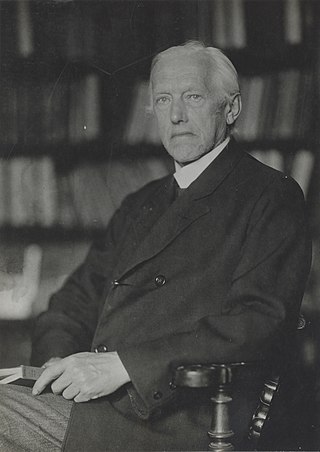
Friedrich Wilhelm Thiersch, was a German classical scholar and educator.

Johann Michael Adolf Furtwängler was a German archaeologist, teacher, art historian and museum director. He was the father of the conductor Wilhelm Furtwängler and grandfather of the German archaeologist Andreas Furtwängler.

Enno Friedrich Wichard Ulrich von Wilamowitz-Moellendorff was a German classical philologist. Wilamowitz, as he is known in scholarly circles, was a renowned authority on Ancient Greece and its literature.

Heinrich Wölfflin was a Swiss art historian, esthetician and educator, whose objective classifying principles were influential in the development of formal analysis in art history in the early 20th century. He taught at Basel, Berlin and Munich in the generation that saw German art history's rise to pre-eminence. His three most important books, still consulted, are Renaissance und Barock (1888), Die Klassische Kunst, and Kunstgeschichtliche Grundbegriffe.

Heinrich Brunn, since 1882 Ritter von Brunn was a German archaeologist. He was known for taking a scientific approach in his investigations of classical Greek and Roman art, being credited with introducing the method of determining the date and source of sculptural fragments by way of thorough analysis of the account of anatomic detail.

The Staatliche Antikensammlungen is a museum in Munich's Kunstareal holding Bavaria's collections of antiquities from Greece, Etruria and Rome, though the sculpture collection is located in the Glyptothek opposite, and works created in Bavaria are on display in a separate museum. Ancient Egypt also has its own museum.

Georg Otto August Wissowa was a German classical philologist born in Neudorf, near Breslau.

Wolfgang Helbig was a German classical archaeologist born in Dresden. He is known for his studies involving the wall paintings of Campania (Pompeii).
Gustav Körte was a German classical archaeologist. He was the brother of philologist Alfred Körte (1866–1946) and surgeon Werner Körte (1853–1937).
Walther Oskar Ernst Amelung was a German classical archaeologist who was a native of Stettin. Amelung specialized in investigations of ancient Greek and Roman sculpture.
Georg Lippold was a German classical archaeologist born in Mainz. Lippold was a specialist of ancient Greek and Roman art.

Heinrich Bulle was a German archaeologist born in Bremen.

Arthur Alexander Johann Milchhöfer was a German archaeologist born in Schirwindt, East Prussia, Kingdom of Prussia. He specialized in studies of Greek Antiquity, and is remembered for his topographical research of ancient Attica.

Antal Hekler was a Hungarian/German classical archaeologist and art historian. He was a member of the Hungarian Academy of Sciences.

The Exaltation of the Flower is the modern title given to an early Classical Greek marble fragment of a funerary stele from the 5th century BCE. It was discovered in 1861 by Léon Heuzey and Honoré Daumet at a church in Farsala, Thessaly, Greece. Carved in bas-relief in the severe style, the extant upper fragment of the marble relief stele depicts two women holding what appear to be flowers or other objects. The work is held by the Louvre museum in the Department of Greek, Etruscan, and Roman Antiquities.
Paul Heinrich August Wolters was a German classical archaeologist who specialized in ancient Greek and Roman art. He was the son of theologian Albrecht Wolters (1822–1878).
Karl Purgold was a German classical archaeologist and museum director.
Ernst Langlotz was a German classical archaeologist and art historian, who specialized in Greek sculpture of the 6th and 5th centuries BCE.

Hans Seger was a German prehistorian.
Karl Leo Heinrich Lehmann (1894–1960) was a German-born American art historian, archaeologist, and professor. He was known for archaeology work in Samothrace, Greece and the related publications. He was a professor at New York University Institute of Fine Arts from 1935, until his death in 1960. Lehmann was the founder and director of the Archaeological Research Fund at New York University












